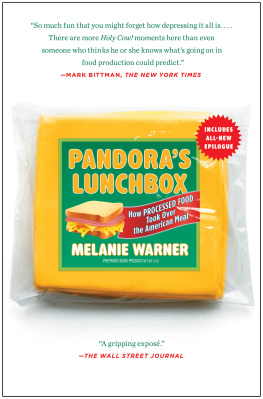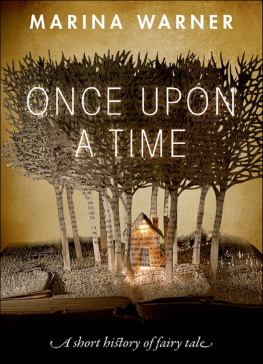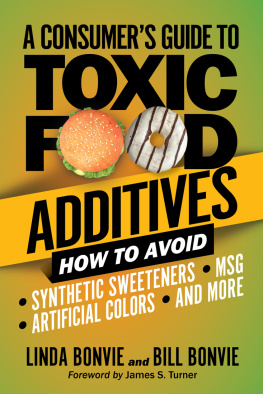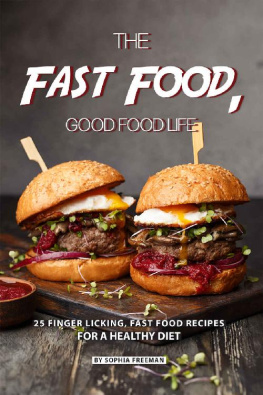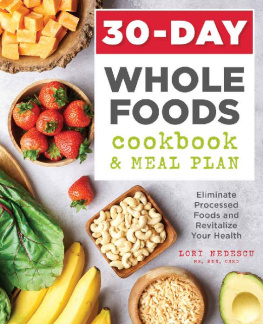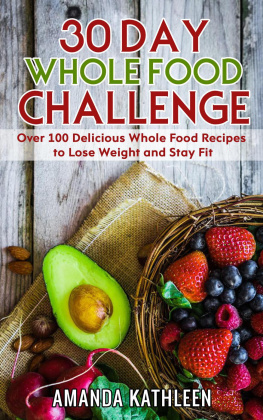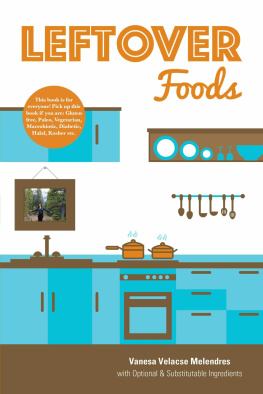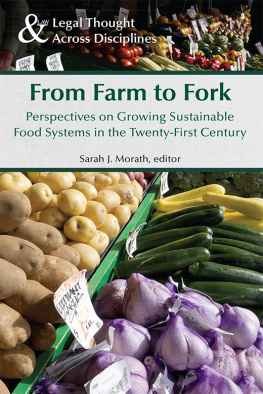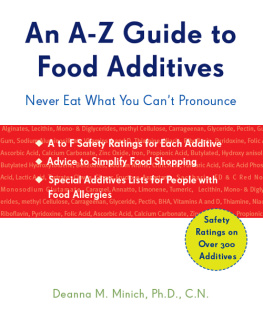Thank you for downloading this Scribner eBook.
Join our mailing list and get updates on new releases, deals, bonus content and other great books from Scribner and Simon & Schuster.
C LICK H ERE T O S IGN U P
or visit us online to sign up at
eBookNews.SimonandSchuster.com
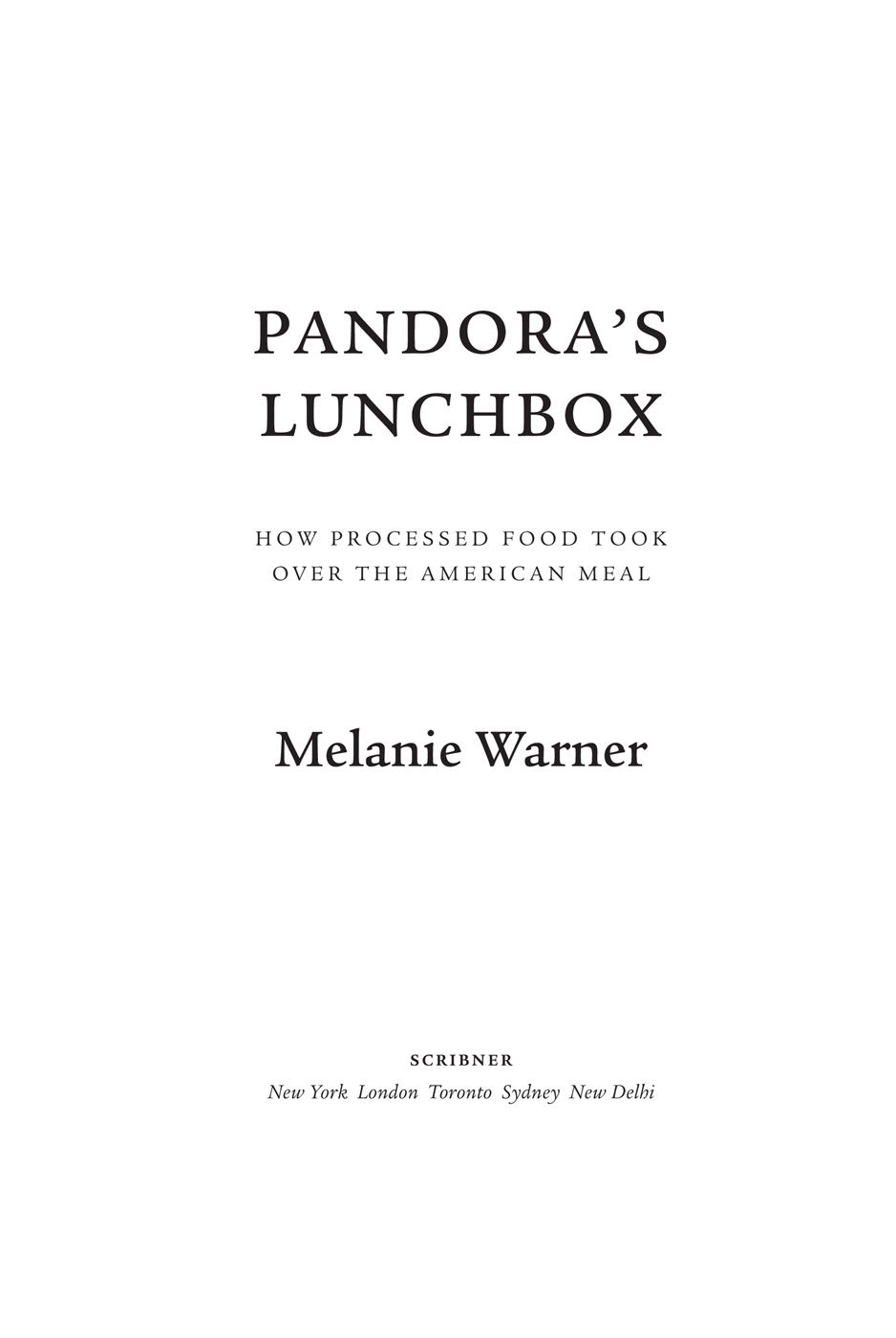
Table of Contents
For Therese and Rich
I have always stood for food that is food.
Harvey Wiley, pioneering chemist and father of the Food and Drug Administration
Introduction
A NUMBER OF YEARS AGO, I went to the supermarket and bought an overflowing armful of cereal boxes and cookie packages. Id started writing about the food industry for the New York Times not long before, and Id decided to test whether those expiration dates printed on packages actually meant anything. Id always wondered what happened to food after the expiration dates passed. Would the cookies turn green or taste like old shoes? Would bugs crawl out of the cereal? I tucked the boxes and crinkly bags away in my kitchen for nearly a year. The dates printed on the packages came and went, and when I opened them, the results were fairly unremarkable: my cereal and cookies looked and tasted perfectly normal, almost as if Id just bought them.
I started wondering how long other foods would last. My experiment expandedfrozen dinners, kids lunches, loaves of bread, processed cheese, hot dogs, pudding, and Pop-Tarts. I brought home samples of fast-food burgers, fries, chicken sandwiches, and chicken nuggets. At the time I was working from home, and I had to keep everything out of reach of our two young sons, who were never able to understand why they couldnt eat just one Oreo or have a taste of a Pop-Tart.
I worried that my work area might succumb to some sort of awful infestation. I pictured fruit flies or those tiny worms that get into the forgotten bag of flour in the back corner of the top cabinet. But none of this happened. Much of my collected food stubbornly refused to decay, even after as many as six yearsfar beyond expiration dates.
I wondered what had happened to this food to make it so eternal, so unappealing to the mold and bacteria that normally feast on ignored leftovers and baked goods. It seemed to me that the dates printed on the package had little to do with true expiration. What did those dates actually mean? How was it possible that foods that seemed perfectly edible could be immune to natural processes of decomposition? What were we actually feeding our kids?
Around our house, my experiments were regarded as little more than mildly amusing, sort of weird, and definitely gross. My food collection was a funny little hobby. Until the guacamole incident.
On a Fourth of July trip out of town in 2011, my husband had returned from the grocery store with a tub of fresh guacamole. They made an announcement over the loudspeaker that they had just made it over at the deli, so I went and got some, he said proudly.
The container had a haphazardly applied sticker on it, indicating that it very well could have been made fresh by one of the stores white-coated deli workers. But there was something unusual about the ingredients: Hass avocados, salt, ascorbic acid, citric acid, xanthan gum, amigum, text-instant, tomatoes, yellow onion, jalapeo, cilantro.
I was knee-deep in research on food additives, but Id never heard of amigum or text-instant. I went to the store and bought another tub, tucking it into our fridge at home and figuring Id look into those strange ingredients later. Mostly I forgot about it. Then, nine months later, my mom, who lives with us in Boulder, Colorado, announced shed tried some of the guacamole. Wed just had a birthday party for one of our boys, and Id bought some dips from Whole Foods. I hoped that was what she was referring to, but I was pretty sure all of it was gone.
My mom had tried the other guacamole, the Fourth of July stuff, of course. It was a little spicy, she declared.
My food museum was nauseating, but it had never occurred to me that it could actually sicken anyone. I was concerned because, as an older person, my mom has a higher risk of contracting a life-threatening food-borne illness. Mom assured me everything would be fine; she is nothing if not an unrelenting optimist. Amazingly, though, she was right. Not even an intestinal rumbling. Shed only tried a little, thank God.
Some people probably would have looked at that tub of green goop and not eaten any of it. It was brown around the edges and didnt look particularly fresh. But others might have done exactly what my mom did, and mistaken it for something edible. Even homemade guacamole tends to darken after a few days, and what my mom ate had none of the red flags that help guide us in our decisions about whether or not to consume something. There was no mold and no bad smell.
Like so much of the food we eat today, this immortal guacamole was not what it seemed. It had, in fact, been preparedor assembledby those deli workers, but not according to any recipe youd use at home. It didnt look like a processed food, but thats exactly what it was. Along with the usual avocados, tomatoes, and onions, this guacamole had corn. Or corn manipulated beyond recognition so that it had been transformed into preservatives you cant taste, smell, or see. And then there was that text-instant, as well as amiguman ingredient that, I later learned, was even more bizarre than I could have imagined.
And that is the story of so much of our food, it turns out. Although my mother instilled in me a healthy skepticism of processed foods growing up, allowing me very limited access to what she called gooped-up food, I had no idea just how tremendously technical our food production had become until my food experiments impelled me to take a closer look. What started as an earnest attempt to understand the true meaning of labeling on the packages of the foods so many of us eat became a larger journey that brought me inside the curious, intricate world of food science and technology, a place where food isnt so much cooked as disassembled and reassembled. Over the last century, such complex modes of production have ushered in a new type of eating, what we call processed food.
Considering our vast and bewildering cornucopia of modern food choices, its easy to forget that most of the items lining the inner aisles of the supermarket and the substances offered on fast-food menu boards simply didnt exist a century ago. The avalanche of prefabbed, precooked, often portable food into every corner of American society represents the most dramatic nutritional shift in human history. If we really are what we eat, then Americans are a different dietary species from what we were at the turn of the twentieth century. As a population, we ingest double the amount of added fats, half the fiber, 60 percent more added sugars, three and a half times more sodium, and infinitely greater quantities of corn and soybean ingredients than we did in 1909.
The trouble with this wholesale remaking of the American meal is that our human biology is ill equipped to handle it. The way our bodies metabolize food is stuck somewhere in the Stone Age, long before the age of Cheez Whiz, Frosted Flakes, and Classic ChickN Crisp fried in vegetable oil. Our many novel and high-tech manipulations of food destroy much of its essential geography, resulting in all sorts of unintended consequences. When we start taking food apart and industrially processing it, it often stops making biological sense.
Processed food is even more ubiquitous than we think it is, in part because many products are designed to look as if theyre not really processed at all. Subways fresh sandwiches and the center aisles at Whole Foods, for instance, can both be quite perplexing. What are boxes of General Millss Cascadian Farms Fruitful Os and Cinnamon Crunch, if not Froot Loops and Cinnamon Toast Crunch by other names? Whole Foods co-founder John Mackey once acknowledged that some of what his stores sell is a bunch of junk. And Subways bread is not much more fresh and its meat no more whole than the bags of chips sitting up at the register. In total, some 70 percent of our calories come from this sort of (ultra) processed food. As an industry, this amounts to $850 million a year.
Next page
